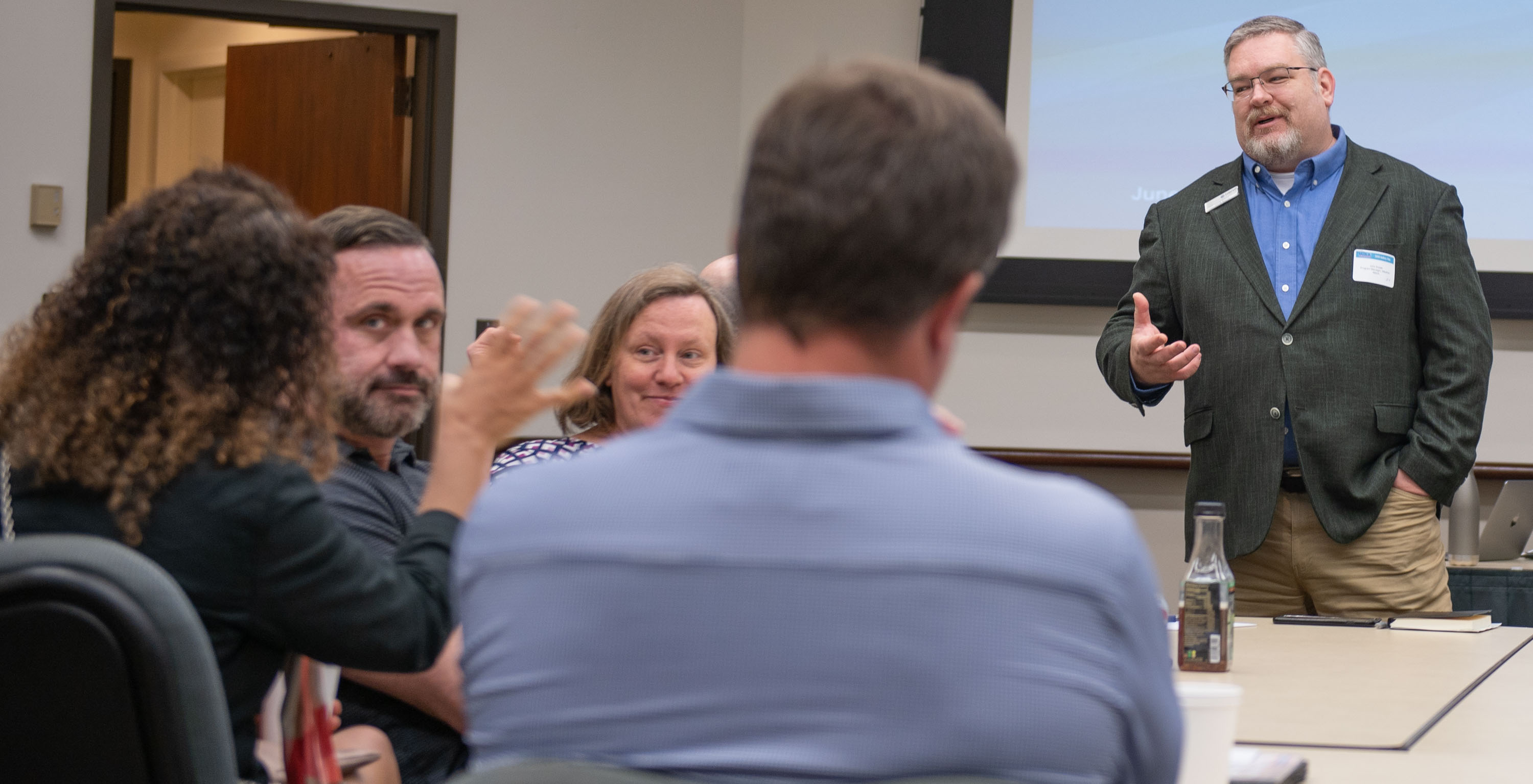Friends & Partners in Aviation Weather Meeting

Preview of the FPAW 2019 Fall Meeting
Three primary topic areas emerged from the planning meeting conducted in April. Session leads have been identified for each session; they have been meeting bi-weekly since June. Below are the session titles, session leads, anticipated dates and times and preliminary session descriptions.
Wednesday, 23 October 2019
8:00 a.m. – 12:00 p.m. |
Planning of 2019 FPAW Fall MeetingPresented by: Matt Fronzak (MITRE) and Matthias Steiner (NCAR) Potential topics for the FPAW 2020 Spring Meeting in Washington, DC will be discussed, and leads for session topics identified. In any remaining time, we will discuss a topic near and dear to all our hearts, namely the evolution and future of FPAW. |
1:20 p.m. – 5:00 p.m. |
Weather Information from the Flight DeckPresented by: Steve Darr (Dynamic Aerospace), Gary Pokodner (FAA) and John Steventon (FAA) This session will be focused on the flow of weather information from the flight deck, ranging from automated sensor-based observations to EFB-augmented and pilot-reported observations (PIREPS). An FPAW position on the question of ADS-Wx equipage will be sought and, if consensus is achieved, communicated to the joint RTCA/EUROCAE Combined Surveillance Committee (CSC). The status of efforts to improve the collection of weather from the flight deck and the benefits of such efforts will be discussed by presenters, panelists and the audience. An examination of revised FAA guidance including Flight Standards Weather Policy and the newly published FAA Weather Handbook will take place. Finally, PIREPs will be looked at from multiple perspectives, in anticipation of a PIREP Summit early in 2020. This session will be divided into three separate parts: 1:20 p.m. – 2:20 p.m. 2:35 p.m. – 3:35 p.m. 3:50 p.m. – 4:50 p.m. |
Thursday, 24 October 2019
8:30 a.m. – 12:00 p.m. |
Convective Weather Information: What’s Available and How Users See and Interpret ItPresented by: John Kosak (NBAA) and Judith Reif (JR Flight Services, LLC) Presenters, panelists and audience members in this session will explore the universe of convective weather products available to non-meteorologist end users such as pilots, flight attendants, dispatchers and air traffic controllers, how to best navigate this tricky landscape, and what to look forward to in the coming years. Included will be a short presentation from the FAA’s Weather Information Mitigation and Transition (WIMAT) team to talk about all the different convective forecast products that the FAA currently produces, why they think they are or are not necessary, and what the WIMAT team thinks we need or don’t need going forward. Finally, panelists and audience members will discuss the differences in how all the parties “see” thunderstorms through the various product and sensor displays, and how minor differences in the way a storm is viewed can lead to major decision-making disconnects. We hope to have a short discussion of how radar works and why that is important. If we have pilots, dispatchers and controllers all looking at something different, what are the impacts to the safety and efficiency of the NAS? This session will be divided into two separate parts: 08:30 a.m. – 10:00 a.m. 10:30 a.m. – 12:00 p.m. |
1:00 p.m. – 5:00 p.m. |
Weather for Emerging Modes of TransportationPresented by: Rex Alexander (Vertical Flight Society), Joel Siegel (Booz Allen Hamilton), Matthias Steiner (NCAR) This session will discuss the weather support needs of future entrants such as Urban Air Mobility (UAM) and Unmanned Aerial Systems (UAS) into the National Airspace System. These smaller vehicles, with different flight capabilities such as electric vertical takeoff and landing (eVTOL), are more susceptible to weather impacts such as icing and turbulence and therefore require higher resolution forecasting. Presenters, panelists and the audience will discuss potential challenges with microscale weather forecasts, and how these forecasts will impact Unmanned Traffic Management (UTM) and Beyond Visual Line of Site (BVLOS) operations. This session will be divided into three separate parts: 1:00 p.m. – 2:15 p.m. 2:30 p.m. – 3:45 p.m. 4:00 p.m. – 5:00 p.m. |
Any person who attends an NBAA convention, conference, seminar or other program grants permission to NBAA, its employees and agents (collectively "NBAA") to record his or her visual/audio images, including, but not limited to, photographs, digital images, voices, sound or video recordings, audio clips, or accompanying written descriptions, and, without notifying such person, to use his or her name and such images for any purpose of NBAA, including advertisements for NBAA and its programs.


 International Business Aviation Council Ltd.
International Business Aviation Council Ltd.